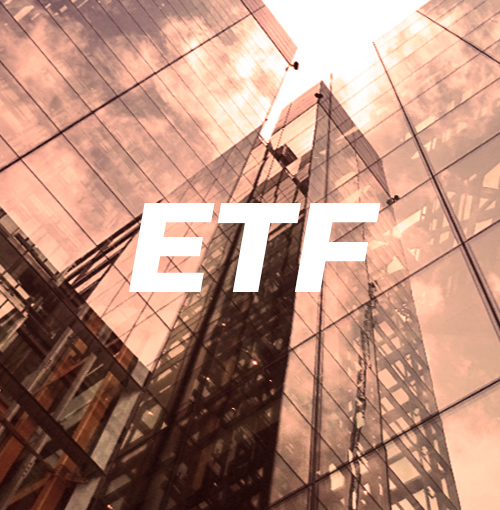
Bond ETFs: Bridging the Gap Between Bonds and ETFs
Exchange-traded funds (ETFs) that center around bonds have been increasing in popularity, providing investors a transparent and liquid means of venturing into the fixed income domain. This article, presented by Investora, will give you a fresh look into Bond ETFs, emphasizing their diverse offerings, advantages, and some frequently asked questions.
Unraveling Bond ETFs: More than Just Bonds
Important: Bond ETFs don't just mimic the bond market; they optimize the investment process for ease and broader reach.
At their core, Bond ETFs can be viewed as the fusion of individual bonds and traditional ETFs. They essentially provide investors a convenient gateway to the world of fixed-income securities. Notably, Bond ETFs find their appeal in:
- Transparency: These ETFs trade on major stock exchanges such as NYSE, ensuring clear pricing and trade dynamics.
- Liquidity: They can be traded anytime during trading hours, a stark contrast to individual bonds or mutual funds.
- Diverse Exposure: With Bond ETFs, investors can easily diversify across various bond types, including corporates, Treasuries, or even international bonds.
- Dividends: Interest is paid monthly, while capital gains, if any, are disbursed annually.
- Tax Implications: Bond ETF's tax implications differ, primarily based on whether the returns are considered income or capital gains.
Beyond market efficiency and transparency, another attribute of bond ETFs is their adaptability. In times of economic instability, investors might hesitate to venture into individual bonds due to fears of default. Bond ETFs, backed by a diversified portfolio, offer a safeguard against such uncertainties, allowing investors to spread risk across multiple entities.
Fact: In 2020, U.S. bond ETFs witnessed a staggering inflow, securing $168 billion
Moreover, bond ETFs present an enticing choice for those who are unfamiliar with the intricacies of the bond market. Their structure eliminates the need for individual investors to grasp the complexity of bond yields, maturities, and credit ratings. With a bond ETF, they can easily gain exposure to a well-curated selection of bonds without deep diving into the specifics.
Another compelling aspect is the potential for international diversification. Some bond ETFs allow investors to branch out globally, investing in government and corporate bonds from different nations. This global reach can serve as a hedge against regional economic downturns and promote overall portfolio growth.
Tip: If new to the bond world, start with a bond ETF to familiarize yourself with the bond market dynamics.
A Deep Dive into Bond ETF Categories
Government Bond ETFs like GOVT and VGIT predominantly focus on U.S. government securities, ensuring safety but often offering a lower yield. In contrast, High-Yield Bond ETFs such as HYLB and SPHY dive into riskier bonds but can offer attractive returns.
Tip: For those uncertain about which ETF to opt for, total bond-market ETFs are worth considering, as they provide a comprehensive view of the U.S. bond market.
Moreover, Municipal Bond ETFs (like MUB and TFI) offer a unique advantage for U.S. investors. Any interest income generated from these ETFs is exempt from federal income taxes, making them an attractive option for those in higher tax brackets. On the global front, ETFs like EMB and VWOB provide exposure to bonds from various countries, balancing risk and rewards across regions.
Bond ETFs are far from being monolithic. Here's a look at their multifaceted world:
- Government Bond ETFs: GOVT, VGIT
- Corporate Bond ETFs: VTC, VCLT
- High-Yield Bond ETFs: HYLB, SPHY
- Municipal Bond ETFs: MUB, TFI
- International Bond ETFs: EMB, VWOB
Remember: High-yield doesn't always mean high risk. However, always gauge your risk tolerance before investing.
Interesting Fact: Municipal Bond ETFs are one of the only investment vehicles that can generate tax-free income for U.S. residents.
Weighing the Pros and Cons of Bond ETFs
Bond ETFs certainly come with a slew of benefits. They provide regular coupon payments and offer the flexibility of assets with varying maturity dates. However, they do have their limitations. Their never-maturing nature means the principal repayment isn't guaranteed. Moreover, their price could suffer when interest rates ascend.
Important: Bond ETFs are not free from costs; always consider the expense ratios.
While bond ETFs offer ease of entry and diversified exposure, it's crucial to understand the expense ratios associated with them. These ongoing fees, albeit low, can accumulate over time, especially for long-term investors.
Another point of deliberation is the tracking error. While bond ETFs aim to mimic the performance of their benchmark index, minor discrepancies can arise. This is due to the ETF's inability to hold every bond in the index or changes in the bond market's liquidity conditions.
Remember: Unlike individual bonds, bond ETFs don’t guarantee the return of the principal amount.
Lastly, bond ETFs, unlike individual bonds, don't have a maturity date. This means that the return of the principal amount isn't guaranteed. While bond ETFs spread risk, the absence of a maturity date can pose challenges for investors looking for a guaranteed return at the end of a specified period.
Interesting Fact: The first bond ETF was introduced in 2002, almost a decade after the inception of the first stock ETF.
Comparative Analysis: Bond ETFs, Mutual Funds, and Ladders
While bond ETFs are a hot topic, it's essential to compare them with other prevalent fixed-income investment options:
- Transparency: Bond ETFs take the trophy when it comes to real-time insights into fund holdings.
- Liquidity: Both mutual funds and ETFs are liquid, but the latter provides real-time trading advantages.
- Costs: Bond ETFs might come with ongoing management fees, which could outweigh the lower spreads over a longer horizon.
- Flexibility: ETFs might not be the go-to for those seeking bespoke portfolio offerings.
Important: Each of these investment vehicles – bond ETFs, mutual funds, and bond ladders – caters to different financial goals and risk tolerances. It's crucial to understand their nuances before choosing.
Bond ETFs vs. Mutual Funds:
Bond ETFs and mutual funds share a common goal of offering diversified exposure to bonds. However, there are key distinctions. Firstly, ETFs are traded on the stock exchange, allowing for intra-day trading, offering flexibility that mutual funds lack since they're only traded at the day's closing net asset value. Moreover, ETFs usually boast a more tax-efficient structure compared to mutual funds due to their unique creation and redemption mechanism. Lastly, while both vehicles charge expense ratios, bond ETFs tend to have lower fees on average, making them a cost-effective option for many investors.
Tip: If predictability of cash flow is paramount, consider bond ladders. For flexibility and diversified exposure, bond ETFs or mutual funds might be more fitting.
Bond ETFs vs. Ladders:
Bond ladders are investment strategies that involve purchasing a series of bonds with staggered maturity dates. The idea is to have bonds maturing at regular intervals, ensuring liquidity and the opportunity to reinvest in prevailing interest rates. Bond ETFs, on the other hand, offer a diversified exposure without a guaranteed return of principal at maturity since there's no defined end date. For those seeking regular cash flow and a predictable return of principal, a bond ladder might be more appropriate. However, bond ETFs offer flexibility and diversification that a ladder might not be able to match, especially for investors with limited capital.
Mutual Funds vs. Ladders:
Mutual funds pool money from numerous investors to buy a diversified set of bonds, much like bond ETFs. Unlike bond ladders, there's no strategy to have bonds mature at staggered intervals, which means mutual funds lack the predictable cash flow bond ladders provide. Mutual funds, however, offer professional management, wherein a fund manager actively tries to beat the market, an approach not intrinsic to the bond ladder methodology. For investors who want active management and are less concerned about having regular maturities, mutual funds can be a preferable choice over bond ladders.
Remember: While bond ETFs and mutual funds offer professional management, bond ladders give you control over the selection and timing of bond maturities.
FAQs Uncovered:
What are the primary constituents of a bond ETF?
Bond ETFs primarily consist of a diversified collection of bonds, mirroring the performance of a specific bond index. These indexes can range from corporate bonds, government bonds, municipal bonds, to more specialized types like junk bonds or international bonds. The diversity of the underlying bonds is what provides investors with a level of protection and potential stability, as the risks associated with individual bonds are spread out. Additionally, the exact makeup of a bond ETF will depend on its stated objective, which is explicitly mentioned in its prospectus.
How does interest rate movement affect bond ETFs?
Interest rates have an inverse relationship with bond prices. When interest rates rise, bond prices typically fall, and vice versa. Bond ETFs, which hold a collection of these bonds, are similarly impacted. For instance, if a bond ETF primarily consists of long-term bonds, it might be more sensitive to interest rate changes than an ETF focusing on short-term bonds. Investors should be aware of the duration of the bonds within an ETF, as it gives an idea of the ETF's sensitivity to interest rate shifts.
Can you lose money with bond ETFs?
Yes, like all investments, bond ETFs carry inherent risks. While bonds are often seen as less volatile than stocks, bond ETF prices can fluctuate based on various factors like interest rate movements, credit risk concerns, and market liquidity. If the bonds within the ETF get downgraded, or if there's a broad sell-off in the bond market, the ETF's value can decrease. Additionally, while bond ETFs offer diversified exposure, they can't entirely eliminate the market risks associated with the underlying bonds.
How are bond ETFs taxed?
Bond ETFs are typically taxed based on the interest income and capital gains they generate. The interest income, derived from the underlying bond\s coupon payments, is usually taxed at your ordinary income tax rate. If you sell your bond ETF shares at a profit, you might incur capital gains tax. The rate at which these gains are taxed depends on how long you've held the ETF shares: short-term gains (from assets held for one year or less) are taxed at ordinary income rates, while long-term gains enjoy potentially lower tax rates.
How do bond ETFs differ from stock ETFs?
Bond ETFs and stock ETFs differ primarily in their underlying assets. While bond ETFs hold a collection of bonds, stock ETFs hold shares of various companies. This distinction results in different risk profiles and potential returns. Stock ETFs generally carry higher volatility, reflecting the stock market's dynamism, while bond ETFs might be more stable but can be influenced significantly by interest rate movements and credit risks.
How liquid are bond ETFs?
Bond ETFs are designed to be highly liquid, allowing investors to buy or sell shares throughout the trading day at market prices. However, the liquidity of a bond ETF also depends on the underlying bonds it holds. Some bonds might be less frequently traded, affecting the ETF's overall liquidity. Generally, larger and more popular bond ETFs tracking major indexes tend to have higher liquidity than niche or specialized bond ETFs.
Key Points:
Bond ETFs provide diversified exposure, spreading risk across various bonds.
Unlike individual bonds, bond ETFs don't guarantee the return of the principal amount due to the absence of a maturity date.
The tracking error, although minor, can lead to bond ETFs not perfectly mirroring their benchmark index.
Expense ratios, while relatively low, are crucial to consider, especially for long-term investments.
Municipal Bond ETFs can generate tax-free income for U.S. investors.
Bond ETFs have paved a significant path in the investment landscape, offering both seasoned and novice investors a gateway to the vast bond market. With their diversified nature, they present an attractive balance of risk and return, merging the best of bonds and the flexibility of stocks. As with all investments, it's essential to recognize that bond ETFs come with their set of challenges, heavily influenced by interest rate dynamics, credit risks, and global economic events. However, by understanding these intricacies and aligning one's investment strategy accordingly, bond ETFs can serve as a pivotal component in a well-rounded portfolio. The choice between bond ETFs, mutual funds, or bond ladders should be made after a careful examination of one's financial goals, risk tolerance, and investment horizon. With the vast array of options available, investors have the power to craft a bond strategy tailored to their unique needs.
- Share this article





